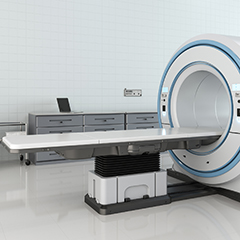Throughout the Covid-19 pandemic, OEMs have been challenged to provide solutions from design adaptions through to completely new machines. Particularly in the medical field, many of these machines rely on high accuracy, meaning high demand on servo system design. In addition to providing a precision motion control capability, reliance on holistic engineering partnerships have been brought to the fore.
Gerard Bush, INMOCO, explains the need for a collaborative approach in motion control development.
The Covid-19 crisis has increased demand across a wide variety of medical sectors, not least imaging and diagnostics. As a result, CT (computerised tomography) scanners, used in the diagnosis of conditions impacting the lungs and circulatory system, among other organs and biological processes, have been heavily relied on. As a result, the motion system on which CT scanners are based, being integral to provide control accuracy, have also faced a strong requirement.
A CT scanner generates a 3D representation of the body by taking a wide series of X-ray images from a range of angles surrounding the patient. To optimise the patient outcome, the key attribute of a CT scanner includes high image resolution, where the more detail and clarity that the scanner presents, the higher the potential of analysis and diagnostics by the medical practitioner. This capability is the result of the speed and accuracy of the scanner’s servo drive and motor control, and the servo package also has to combine control precision with speed of operation in order to minimise the time the patient is subject to the X-ray procedure.
Precision motion control
To achieve these benefits, a medical imaging OEM partnered with Kollmorgen for the supply of its servo drive, motor, cable and supplementary motion control equipment. The AKD servo drives form the basis of precision motion control and are selected by the CT scanner OEM as a result of their high bandwidth torque and velocity loops, combined with real time performance feedback.
The servo drives are matched with the AKM servo motor that offer low cogging to provide smooth and controlled motion, required for precision across multiple X-ray frames per second. High motor power density also ensures a more compact footprint for a smaller overall machine.
Ease and speed of motion application development and programming is also crucial for a faster time to market – especially crucial during the peak demand that the Covid crisis has presented. Combined, drive and motor compatibility ensures fast and reliable integration, which is made easier thanks to the simple to operate graphical user interface and wizard-based autotuning.



























